When the wind is calm, the stillness of the water in the pond and the mirrored reflections of the clouds, or especially the moon at night are almost magical. But even when there is overcast, or a light breeze I can still see reflections.
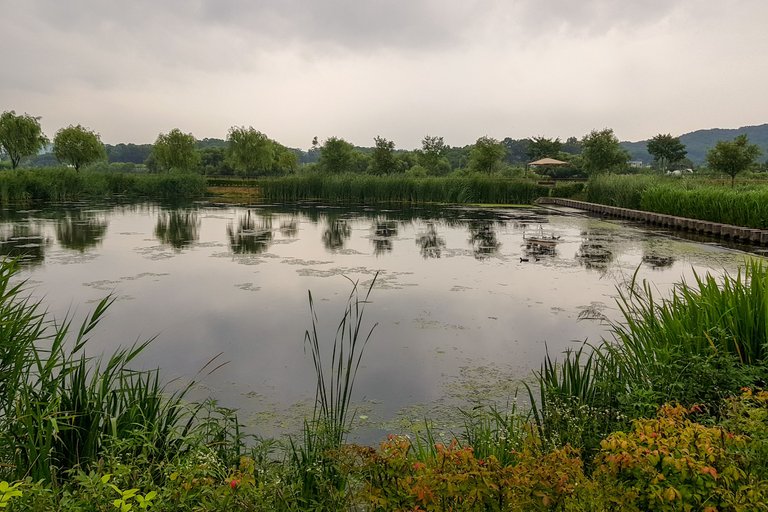
That brings me to summer in the wetlands. Seeing the reflections of the plants and animals, and the shapes dancing around in the breeze or waving in the ripples is almost as nice as a clear reflection. I'm also drawn to all the bright colours, especially the green.
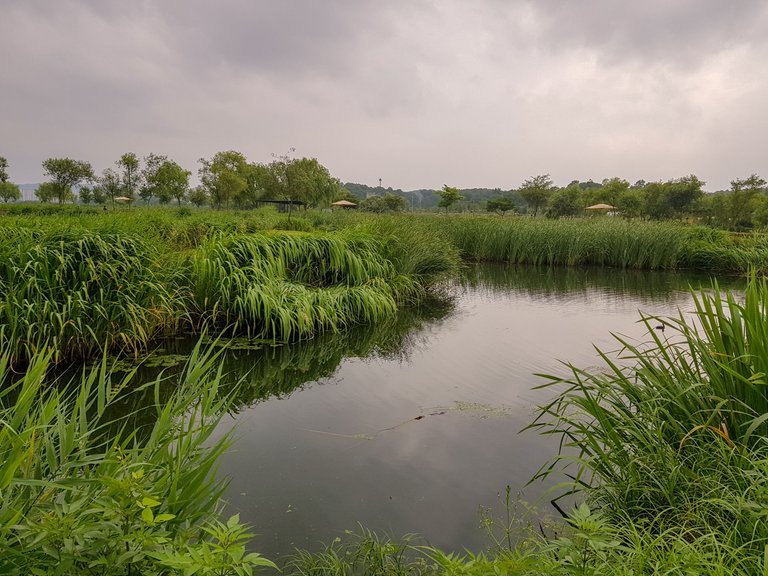
There is so much green, the leaves are green, the plants are green, the algae is green, even some of the flowers and animals are also green. No wonder green is the colour of the environmental movements. But don't worry, this isn't a rant on the importance of protecting the environment.
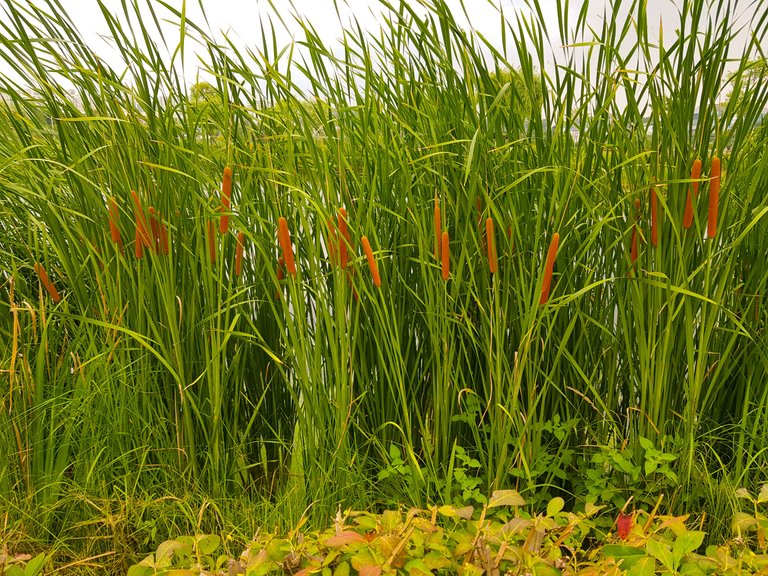
Here we see a wall of rushes. My wife calls them sausage plants. I wonder how they would taste fried up? Actually, there are some swamp plants we can eat. The most famous are water chestnuts and lotus plant roots. Who knew plants growing until swamp mud could be so crunchy? I would have expected soggy.
But what would the wetlands be without animals? I love the photo of this duck. The water barely covers his toes and his expression is very duck-like. A perfect specimen!
In the late spring and early summer, a lot of the waterfowl have babies. This proud mommy has two beautiful ducklings following closely behind her.
This juvenile scooter is a little older than the babies in the previous photo (same species. I think he got lost and is calling to his mom. It happens as they grow up and wander further away. He will find her sooner or later.
His siblings were on the bank. No kidding he got lost, he was too busy swimming and didn't join them as they wandered across the bank into the next pond. Fortunately, ducks are loud and can recognize their mommy and siblings from quite far away.
Here we see another fledgling scooter. He looks a little older than the first two babies but definitely not as old as the grey guys. I wonder if he is looking at a yummy snack or contemplating his reflection? Probably the former, but who knows the mind of a baby duck?
I also really like this photo. It's not the best duck photo I have because of the weird angle and framing. But because he is in the shade, we can see the details of his features and colours so well. For some reason, he wasn't afraid of me. I think he knew I wasn't trying to make a meal of him. I always make sure they have an easy escape, too (going into the pond).
Not all the animals in the wetlands are birds. Here is a common frog. I like him because he has a floating plant on his head. The floating plants do so well in this part of the marsh that we can't even see the water. I believe this was just below a culvert. The ponds are not natural, so culverts, dams and small dykes help maintain proper water levels. Koreans are masters at this because of all the rice farming.
Asides from amphibians, we also have reptiles. Here we ha a common turtle. He is fairly small and if I had to guess he is a released pet. I assume this because I don't think he is a native species, but I could be wrong. He was quite small and in the river just below a large dam and above a small weir. It seems like a bad place for turtles to live naturally, but I don't know much about turtles.
This is the part of the wetlands where the lake birds hang out. On the other side of that ledge they are landing on the end of the wetlands and the large lake reservoir begins. Those trees are about 250m away from where I was standing and on an island. So the birds feel protected and like to nest. It always makes me sad that my zoom maxes out at 200mm (as-c). Egret in trees, especially pines (not willows), are a majestic far-east scene.
I did manage to get one really nice photo of the lake birds. Here we can see a cormorant and a heron. I like how they are positioned. Birds tend to ignore each other if they aren't competing for the same food or hunter and prey.
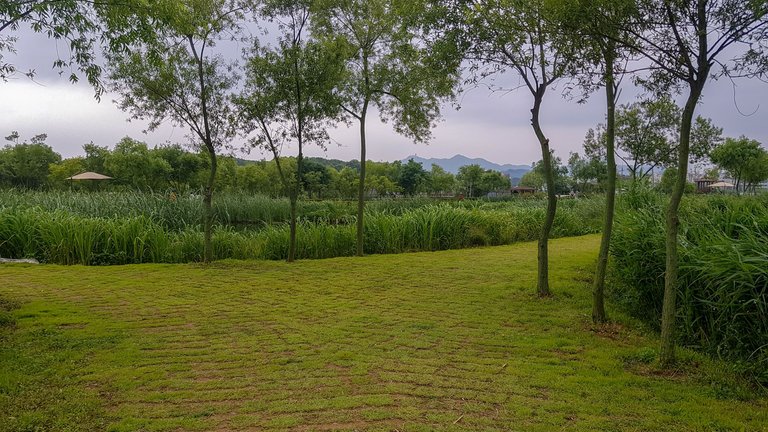
This part of the wetlands has nice winding grassy paths around the ponds. A lot of people don't like it here because they don't spray the area for bugs. Actually, people were complaining but since it is protected, and bugs are important food, no pesticides are allowed.
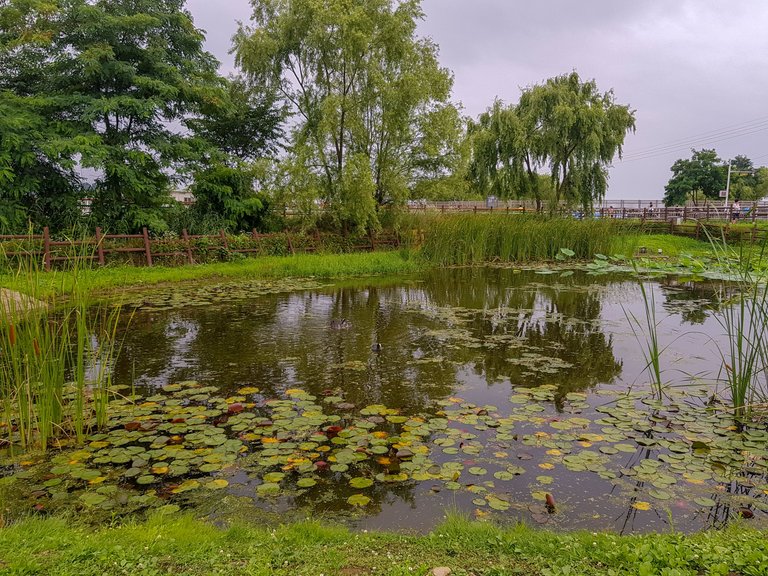
This is the least popular part of the park because they don't cut the grass short and just let everything become a little overgrown. The groundskeepers only do work here once a month or so. This is where I usually find most frogs simple because they have a chance to hide from the birds in the long grasses next to the ponds. Also, there aren't any large fish in these ponds.
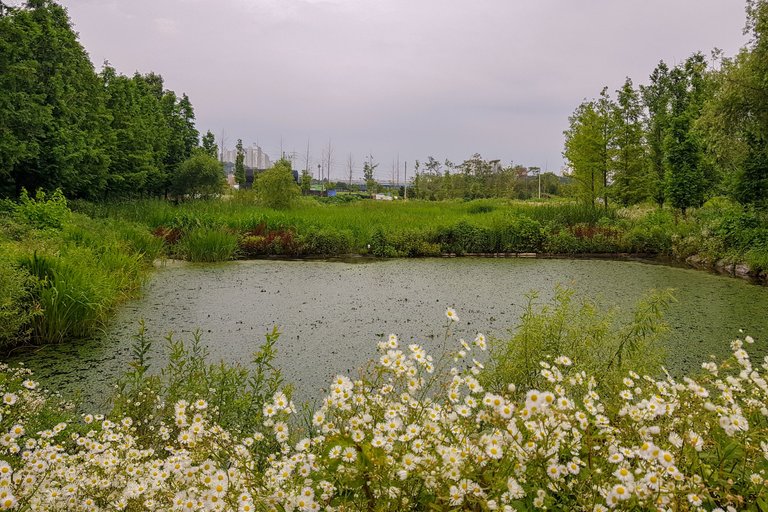
Although we see a row of daisies This isn't the part of the wetlands park devoted to carefully manicured points or flowers, it's more natural over here. But it also serves a purpose. A lot of the water in here is overflow run-off from streets and marshes famously prevent flooding and help purify water.
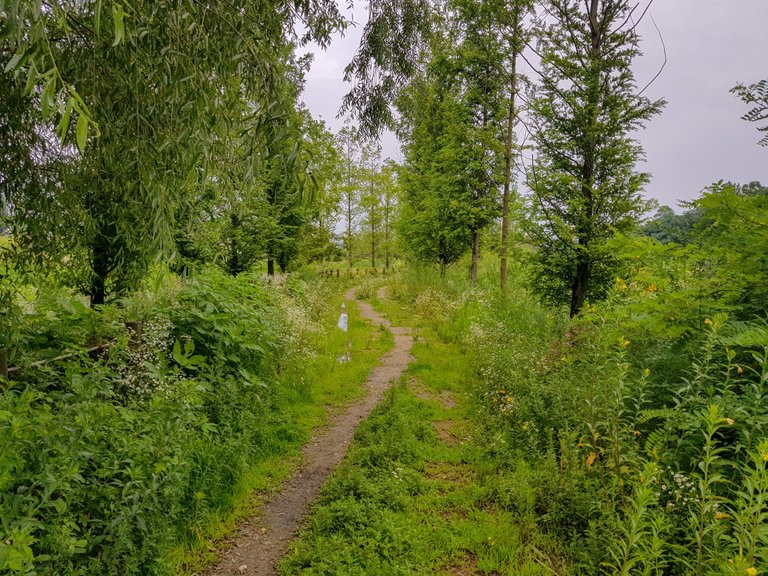
And if the other pictures didn't show it, here you can see what I mean by it starting to look a lot more natural here. I took these photos over a few days and on this day, it obviously rained a little. Actually, I think it was raining while I was on my walk. I usually bring an umbrella in the summer because it can rain any time for about 6 weeks straight due to the monsoon season.
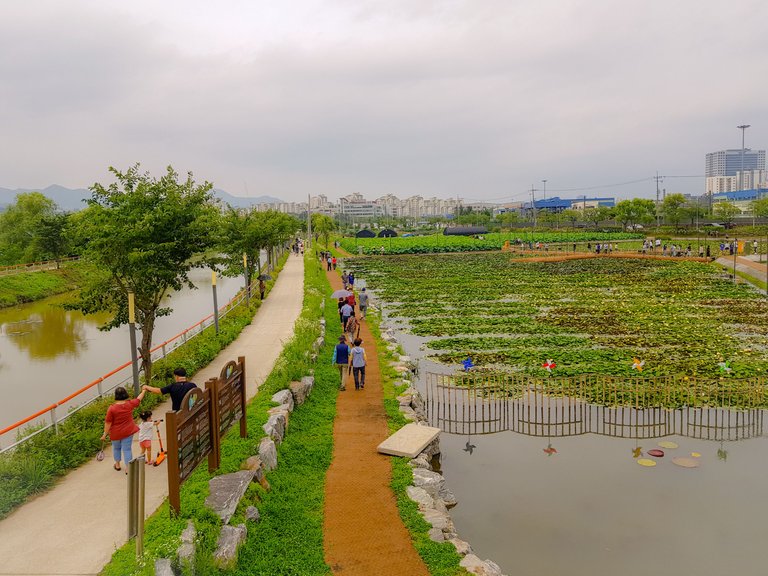
Lastly, we have well-manicured water gardens. You can see this place is carefully maintained and fair more popular. It was just the beginning of lotus season and some of the water lilies were blooming. Maybe next time I'll show you pictures I took of lotus and water lilies. These pictures were taken in July 2020.
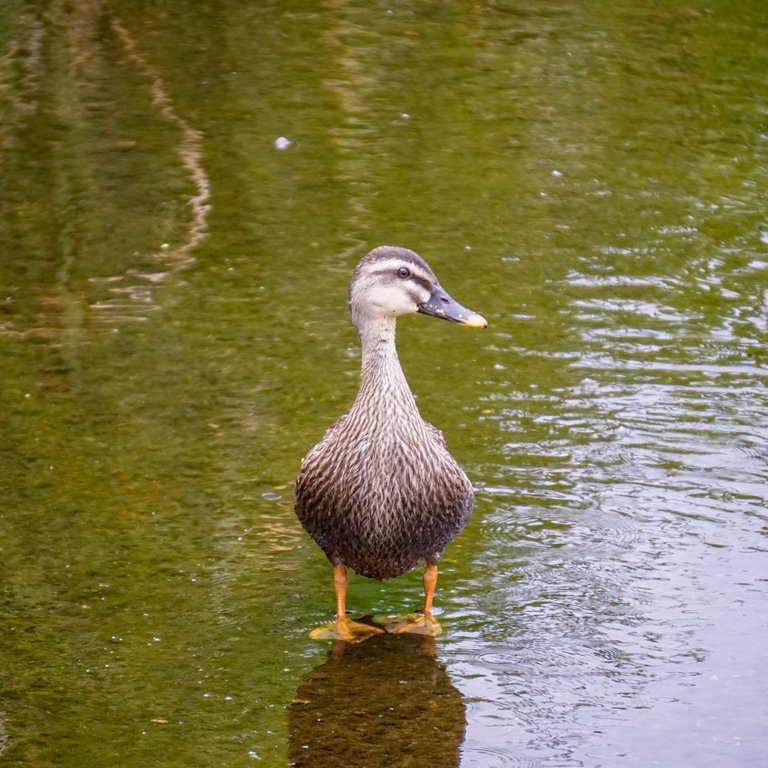
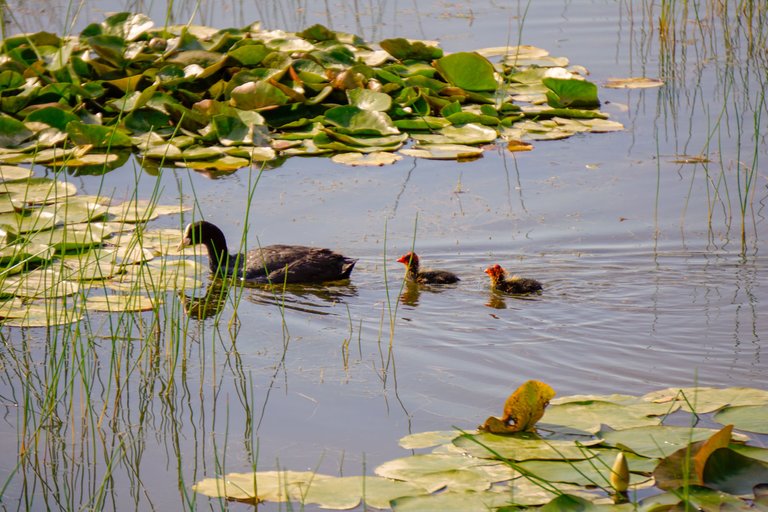
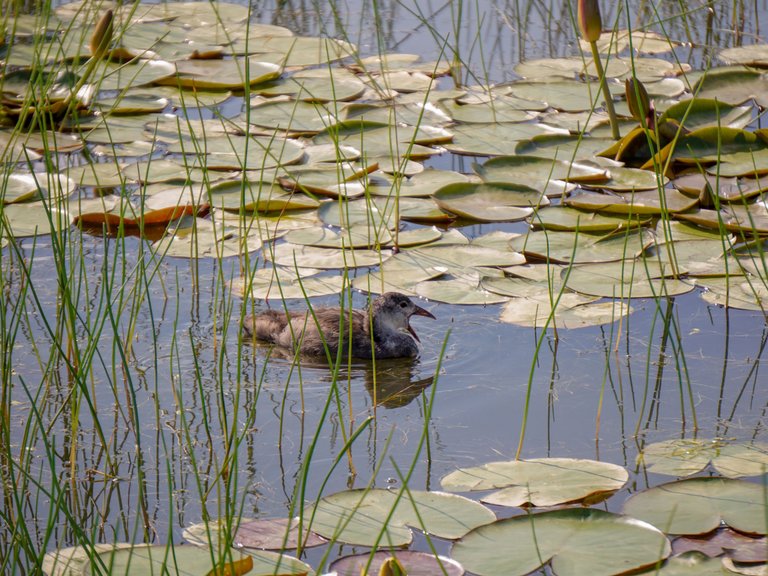
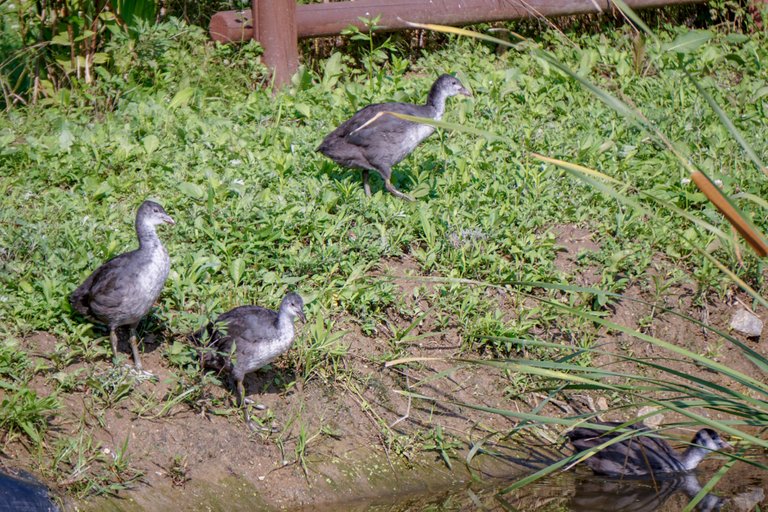

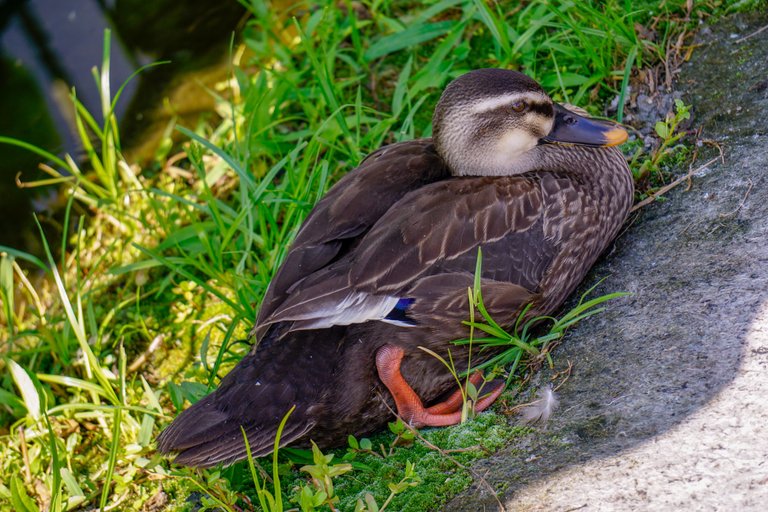
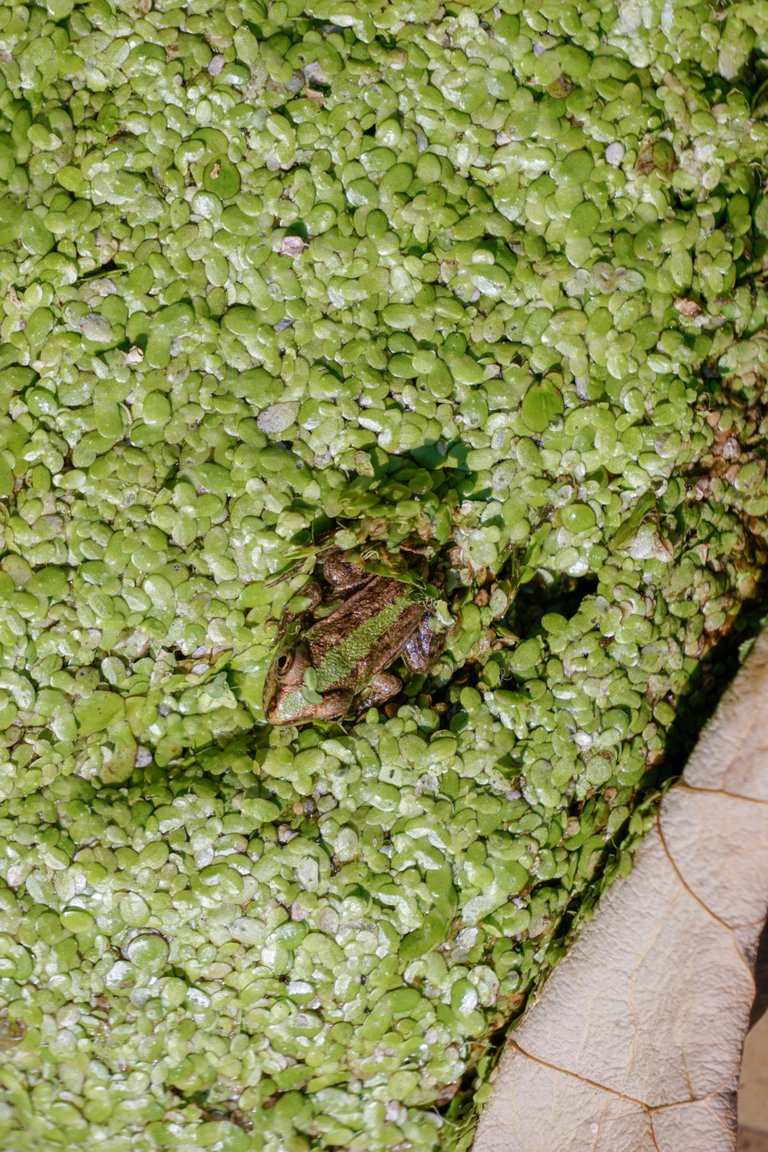
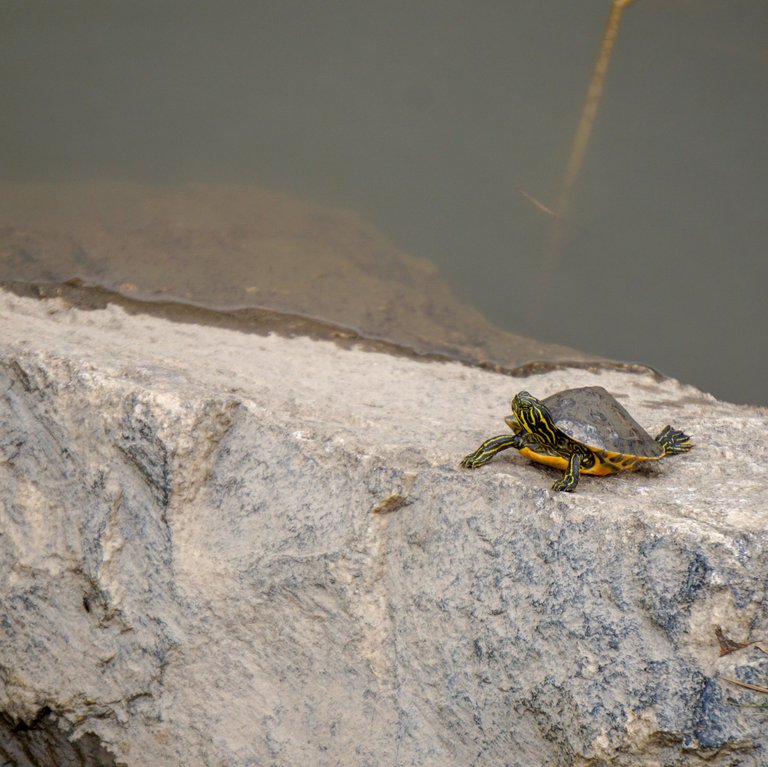
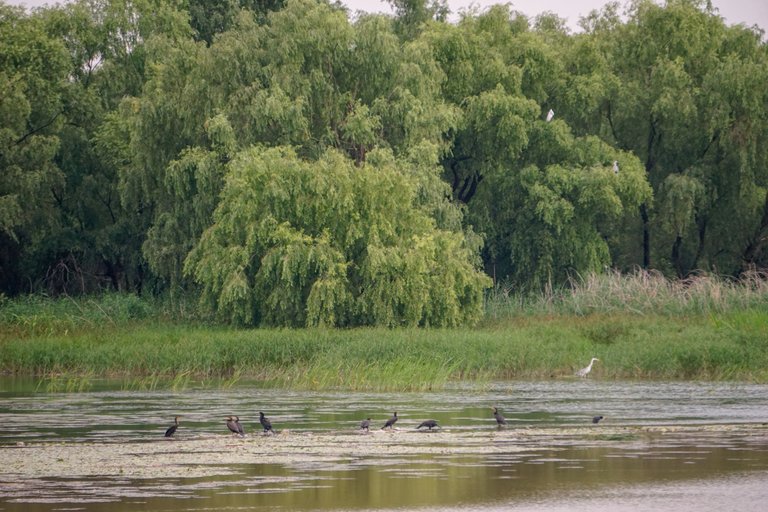
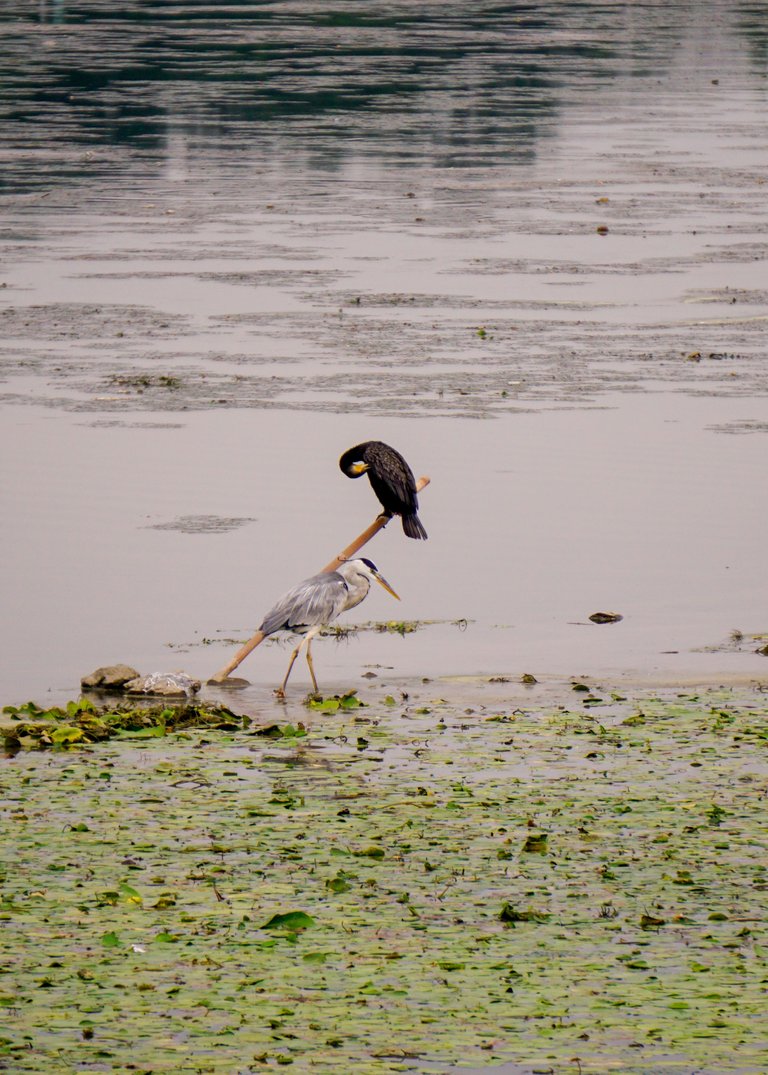
The rewards earned on this comment will go directly to the person sharing the post on Twitter as long as they are registered with @poshtoken. Sign up at https://hiveposh.com.
A floating (hiding) frog is my fav photo from your post.
I always got surprised by frogs in my garden. They are so master to hide on something 😄
Thank you. I find frogs iny garden, too. The tree frogs are the 2nd hardest to find because they are great climbers. The hardest to find are the digging toads because they mostly stay underground. I only find them when digging up root vegetables.
Losing oneself in gardens left to wild in preference to neatly manicured appears to make the animal kingdom far happier.
Contrasting greens with slithers of colour make a great photograph. Comorant and heron birds on our rivers depending on season very similar.
Lovely photography from walks even if rainy weather!
!LUV
@joanstewart(4/10) gave you LUV. H-E tools | connect | <><
H-E tools | connect | <><
Thank you kindly. Some of the best opportunities are on rainy days, less people to scare off the animals or ruin the photos.
Quiet walks in rain very therapeutic, yes people don't tend to enjoy making it all the more pleasant 😃
Congratulations @abitcoinskeptic! You have completed the following achievement on the Hive blockchain and have been rewarded with new badge(s):
Your next target is to reach 9500 replies.
You can view your badges on your board and compare yourself to others in the Ranking
If you no longer want to receive notifications, reply to this comment with the word
STOPCheck out the last post from @hivebuzz: